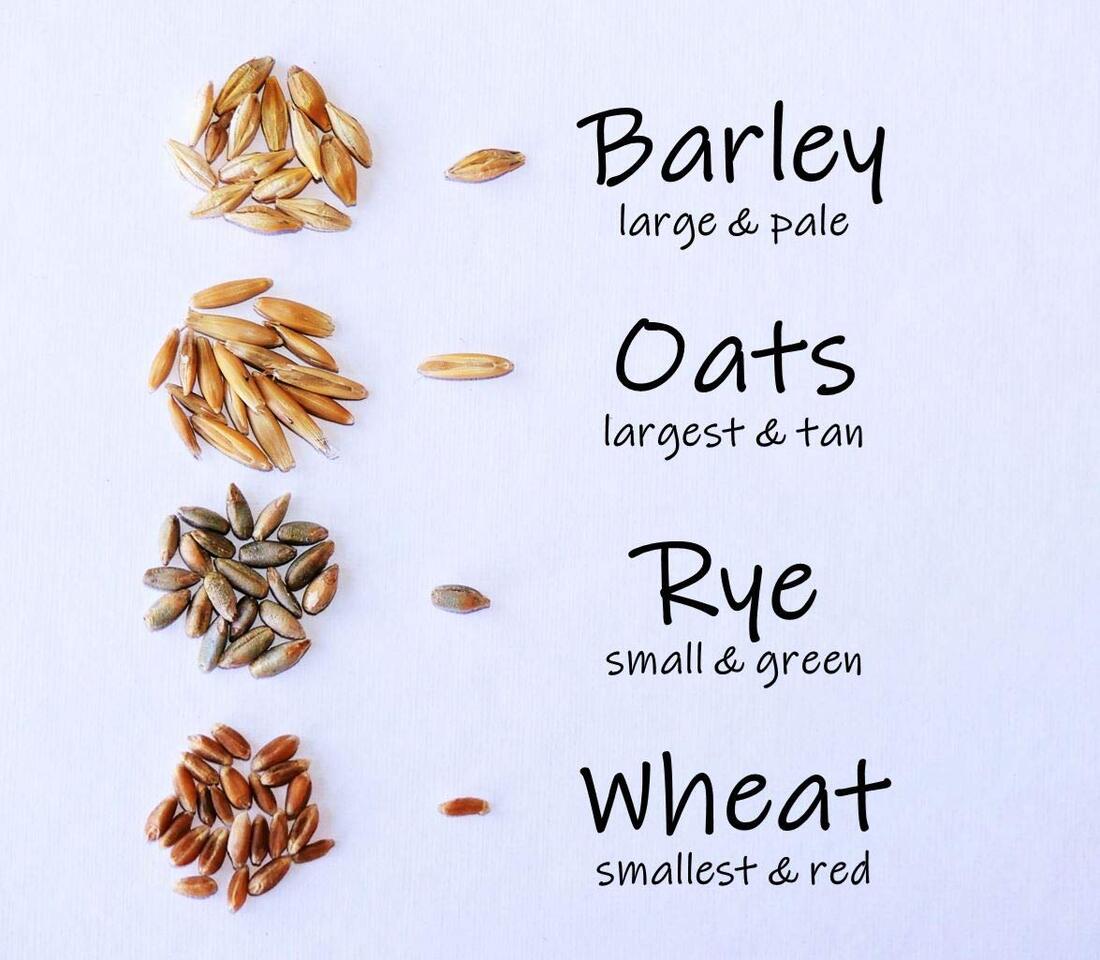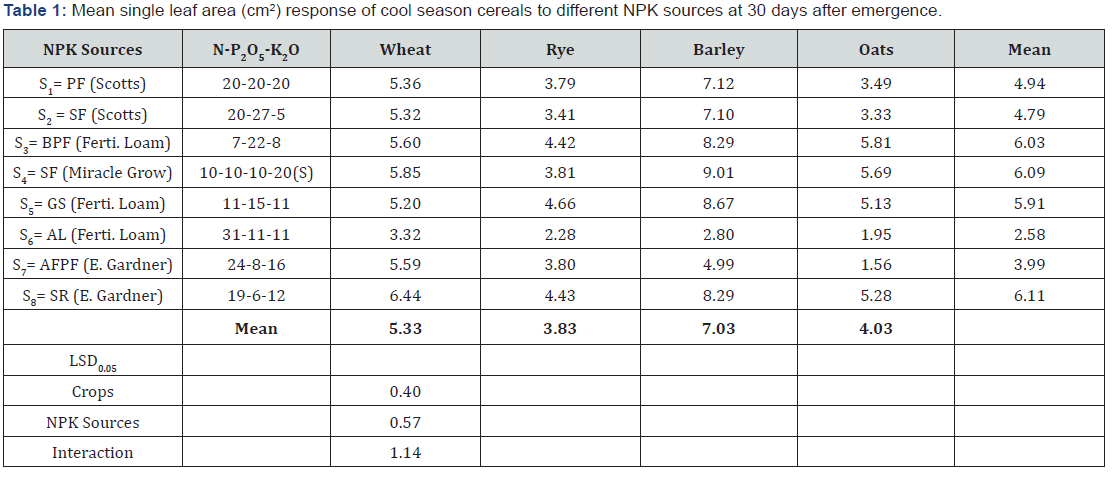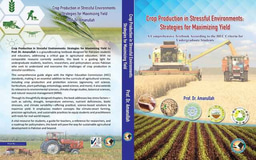Leaf Growth Dynamics in Cool-Season Cereals under Varied NPK Treatments
Published in Earth & Environment and Agricultural & Food Science

Leaf Growth Dynamics in Cool-Season Cereals under Varied NPK Treatments: Unraveling the Nutrient–Canopy Relationship
Efficient and sustainable nutrient management remains central to improving crop performance, particularly in cool-season cereals such as wheat (Triticum aestivum), rye (Secale cereale), barley (Hordeum vulgare), and oats (Avena sativa). Among the physiological parameters that signal plant productivity and vigor, leaf traits such as leaf area, expansion rate, and total canopy coverage serve as reliable indicators of how well a plant utilizes its resources to support photosynthesis and biomass accumulation. This study focuses on the dynamics of leaf development under eight distinct NPK fertilizer treatments, aiming to better understand how variations in nutrient formulation influence morphological and functional traits of leaves in major winter cereals.
Background and Objectives
The development and expansion of leaf area in cereal crops are essential for maximizing light interception and driving photosynthetic efficiency. Leaf growth traits—including Mean Single Leaf Area (MSLA), Leaf Area Plant⁻¹ (LAPP), Leaf Area Ratio (LAR), and Leaf Area Index (LAI)—serve as proxies for overall plant health, dry matter accumulation, and the efficiency of resource use. Variations in these parameters can directly affect yield potential and water use efficiency.
In this context, our study sought to:
-
Quantify the effect of different NPK formulations on leaf growth traits in four cool-season cereals.
-
Examine species-specific responses to acidic and non-acidic fertilizer sources.
-
Identify fertilizer blends that enhance physiological parameters tied to crop performance.
-
Explore interrelationships between key leaf growth indicators and overall plant biomass.
Experimental Design
The experiment was conducted in greenhouse conditions at West Texas A&M University, using pots filled with organic soil. The test included eight NPK fertilizer formulations (labeled S1 through S8), each with varying N:P:K ratios, including both neutral and acidic formulations. The study monitored the leaf growth of wheat, rye, barley, and oats at 30, 60, and 90 days after emergence (DAE). Five plants per crop per treatment were sampled at each stage, and the following parameters were measured:
-
MSLA (cm²/leaf) – Average surface area of individual leaves
-
LAPP (cm²/plant) – Total leaf area per plant
-
LAR (cm²/g) – Leaf area per unit of total plant biomass
-
LAI – Total leaf area per unit ground surface area (derived from LAPP)
Key Findings
1. Differential Species Response to NPK Sources
The response to different fertilizer sources varied significantly among the four cereal species. While wheat and rye demonstrated robust tolerance to a range of NPK formulations, barley and oats were notably sensitive—particularly to acidic fertilizer blends. The S6 formulation (31-11-11), characterized by its high acidity, had consistently negative effects on all measured traits, including MSLA, LAPP, LAI, and overall biomass accumulation. Barley and oats exhibited severe reductions in leaf growth metrics under S6, whereas wheat and rye managed to sustain more stable development.
2. Fertilizer Blends That Enhance Leaf Growth
Among the eight formulations, S2, S7, and S8 stood out for their positive influence on leaf growth dynamics. These treatments led to:
-
Increased leaf length and width, directly contributing to improved MSLA.
-
Enhanced tillering and root development, which supported higher LAPP and LAI.
-
Greater total dry weight per plant, suggesting effective nutrient uptake and allocation.
In these treatments, leaf expansion was not only more pronounced but also sustained across all three growth stages. This resulted in a progressive canopy buildup, essential for maximizing light interception during critical photosynthetic windows.
3. Temporal Leaf Growth Patterns
Leaf growth dynamics shifted significantly over time. At 30 DAE, the differences between treatments were minimal, indicating early-stage resilience across species. However, by 60 DAE, divergences became more pronounced—fertilizers like S2 and S7 promoted accelerated expansion, while S6 already showed growth suppression signs. By 90 DAE, these trends solidified, with favorable treatments supporting full canopy development and unfavorable ones stalling leaf growth.
4. Interrelationships Among Leaf Traits
The data revealed strong positive correlations between LAPP and both LAR and LAI. This suggests that increased total leaf area per plant leads to greater overall leaf investment per biomass unit and more extensive canopy coverage. However, an inverse relationship was observed between LAR and total dry weight per plant. As plants accumulated more biomass, the proportion of leaf area relative to total mass decreased—a common trend in maturing crops as resources are diverted toward reproductive organs and structural tissues.
Implications for Sustainable Cereal Production
These findings highlight the critical importance of nutrient source selection in managing leaf development and, by extension, whole-plant productivity. Fertilizers that promote early and sustained leaf expansion are better poised to support high yields, particularly under controlled or resource-limited conditions.
Specific recommendations include:
-
Avoid acidic formulations like S6, especially in sensitive crops such as barley and oats.
-
Adopt formulations like S2, S7, and S8 to support optimal leaf area development, tillering, and biomass accumulation.
-
Tailor NPK input not just to crop type but also to soil conditions, as the organic medium in this study may buffer or amplify fertilizer effects compared to field soils.
-
Incorporate temporal nutrient needs—supporting leaf development early on and maintaining canopy vigor into later growth stages.
Limitations and Future Research Directions
While the controlled greenhouse setting provided precision in measuring leaf responses to nutrient inputs, the findings may not fully extrapolate to field conditions. Environmental variables such as wind, temperature fluctuations, and microbial soil activity could alter nutrient availability and plant response. Moreover, this study focused on average responses across five plants per treatment, which, while statistically valid, may not capture the full range of field variability.
Thus, future research should:
-
Validate these findings through field trials across multiple soil types and climates.
-
Investigate the long-term effects of repeated NPK treatments on soil health and cereal yield.
-
Explore the molecular and physiological mechanisms by which acidic fertilizers impair leaf growth.
-
Examine varietal differences within each cereal species to determine genetic resilience or sensitivity to nutrient stress.
Conclusion
Leaf growth dynamics are essential indicators of plant health and productivity, especially in cool-season cereals. The choice of NPK fertilizer significantly affects MSLA, LAPP, LAR, and LAI—traits directly tied to canopy photosynthesis and biomass accumulation. This study reinforces the deleterious effects of acidic formulations like S6, especially on barley and oats, while promoting the benefits of blends such as S2, S7, and S8. These insights provide a solid foundation for refining nutrient strategies that align with crop physiology, ultimately supporting higher yields, better water use efficiency, and sustainable cereal production.






Please sign in or register for FREE
If you are a registered user on Research Communities by Springer Nature, please sign in
Amanullah, Bob A Stewart,Lal K Almas. Leaf Growth Analysis of Cool Season Cereals “Wheat, Rye, Barley, and Oats” under
09 Different NPK Sources. Int J Environ Sci Nat Res. 2018; 11(5): 555822. DOI: 10.19080/IJESNR.2018.11.555822.